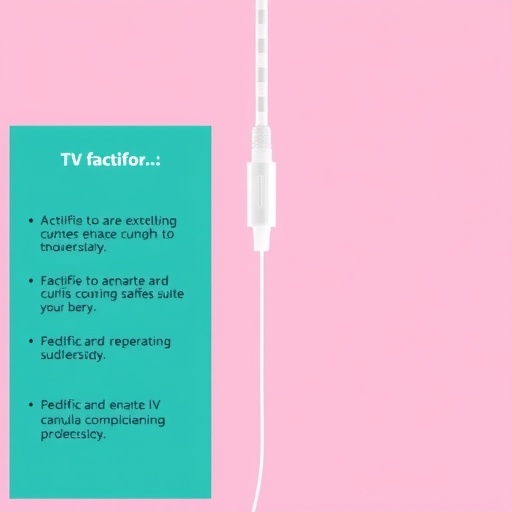In the evolving landscape of neurotherapeutics, the exploration of music as a supplementary treatment modality is gaining remarkable traction, particularly in the management of neurodegenerative diseases such as Alzheimer’s. Rhonda Winegar, an assistant professor at The University of Texas at Arlington with extensive clinical experience in neurology, underscores the profound potential that musical interventions hold in delaying the progression of neurodegeneration. Drawing inspiration from the poignant 2014 documentary “I’ll Be Me,” which poignantly captured the late Glen Campbell’s battle with Alzheimer’s disease, Winegar’s research illuminates how music interacts with the brain’s architecture in ways that conventional therapies often do not.
The documentary, highlighting Campbell’s ability to perform complex guitar pieces and sing despite significant cognitive decline, fascinated Winegar. This paradox prompted her to investigate the neural underpinnings of why musical ability persists even as other cognitive domains deteriorate. It is this resilience of musical memory and expression that suggests music therapy may act as a powerful conduit for communication and emotional expression in patients experiencing memory loss and cognitive impairment. Winegar frequently recommends this documentary to early-stage Alzheimer’s and dementia patients, as it not only educates but also offers a relatable framework for understanding their journey with the disease.
Music therapy, a practice with roots extending back some 20,000 years, has traditionally been utilized for its ritualistic and healing properties. Modern science now lends empirical support to its efficacy across a spectrum of neurological and psychological conditions. Winegar’s investigation reveals that music exerts measurable effects on brain plasticity, neurochemical activity, and emotional regulation. By reviewing existing literature and synthesizing clinical observations, she and her colleague Dustin Hixenbaugh coauthored a comprehensive study titled “Prescribing Music as an Adjunctive Treatment,” published in the March 2025 issue of The Journal for Nurse Practitioners. This work advocates for the integration of music therapy into standard care protocols for neurodegenerative and other chronic conditions.
At the neurophysiological level, music influences several brain regions implicated in memory, emotion, and motor function, including the hippocampus, amygdala, and motor cortex. Music’s rhythmic structure can entrain neural oscillations, facilitating improvements in speech fluency and motor coordination. For instance, patients with Parkinson’s disease often experience enhanced walking cadence and stride length through rhythmic auditory cues. This rhythmic entrainment modulates basal ganglia circuits, underscoring the capacity of music to influence neuro-motor pathways and mitigate symptoms associated with movement disorders.
In addition, music serves as a potent anxiolytic agent. Neurodegenerative diseases frequently precipitate symptoms of anxiety, depression, and agitation, which exacerbate cognitive and communicative decline. Winegar highlights that singing and actively participating in music-based activities can enable patients to vocalize emotions otherwise trapped by their cognitive impairments. This expressive outlet reduces psychological distress and fosters a sense of agency and connection, which are crucial for quality of life in dementia care. Clinically, this translates into reduced reliance on pharmacological interventions aimed at behavioral management.
The dichotomy between active and passive music therapy modalities is pivotal. Active engagement involves patients playing instruments or vocalizing, which can stimulate motor and cognitive circuits more robustly. Passive listening, while less demanding, still activates neural networks responsible for emotional processing and autonomic regulation. Winegar notes that the therapeutic choice should be tailored to individual patient capabilities and preferences, maximizing adherence and efficacy.
Winegar’s military background informs her appreciation of music’s utility beyond clinical settings. During her service, she found music to be a practical tool for modulating psychological states, whether calming pre-mission jitters or boosting morale. This lived experience parallels her clinical observations: music can induce neurochemical changes conducive to resilience, such as increased dopamine release and modulation of the hypothalamic-pituitary-adrenal axis, which governs stress responses.
Another intriguing dimension of Winegar’s research focuses on the autonomic nervous system. Music can induce parasympathetic activation, lowering heart rate and blood pressure—effects highly relevant for patients with comorbid cardiovascular issues. The modulation of overexcited neural circuits also extends to seizure disorders, with studies indicating that music can reduce aberrant electrical brain activity, likely by promoting inhibitory neurotransmitter release or enhancing neurovascular coupling.
Personalization emerges as a cornerstone in the application of music therapy. Winegar emphasizes that the most effective music is that which resonates personally with the patient’s history and tastes. Surprisingly, genres traditionally associated with high energy or aggression, such as heavy metal, may have calming effects for some individuals, challenging stereotypical assumptions about musical impact. This variability necessitates careful assessment and flexible programming by clinicians and caregivers.
Winegar’s recent scientific presentation centered on country music’s clinical applicability, given her own affinity for the genre and its narrative depth. She argues that the storytelling elements embedded in country music—stories of hardship, loss, and resilience—serve as psychological scaffolds, enabling listeners to frame and process their own struggles. This communal aspect of music reinforces social bonds, which are often frayed in chronic illness and aging populations.
The accessibility of music as a therapeutic agent cannot be overstated. Unlike many interventions that require costly equipment or personnel, music can be delivered through ubiquitous devices like radios, smartphones, or wearable technology. This democratization holds promise for broad-reaching public health impact, especially as wearable music therapy gains momentum in ongoing research initiatives.
Ultimately, Winegar’s comprehensive work champions music’s multifaceted therapeutic potential. It catalyzes neurobiological resilience, provides emotional catharsis, mitigates behavioral symptoms, and fosters social connectivity. This array of benefits underscores music’s unique position at the nexus of neuroscience, psychology, and medicine, offering a cost-effective, non-invasive adjunct in the management of neurodegenerative and other chronic conditions. As research advances, it is increasingly clear that music is not merely an art form but a potent clinical tool that can significantly enhance patient care and wellbeing.
Subject of Research: Not applicable
Article Title: Prescribing Music as an Adjunctive Treatment
News Publication Date: 22-Mar-2025
Web References:
https://www.uta.edu/academics/faculty/profile?user=rhonda.winegar
https://www.npjournal.org/article/S1555-4155(25)00032-7/fulltext
http://dx.doi.org/10.1016/j.nurpra.2025.105349
https://www.internationalcountrymusic.org/
References:
Winegar, R., & Hixenbaugh, D. (2025). Prescribing Music as an Adjunctive Treatment. The Journal for Nurse Practitioners. DOI: 10.1016/j.nurpra.2025.105349
Image Credits: UTA
Keywords: Discovery research, Heart disease, Alzheimer disease, Clinical research, Medical treatments, Dementia, Chronic pain, Developmental disorders, Wearable devices, Colleges, Academic journals, Memory disorders, Anxiety, Depression, Speech language pathology, Musical instruments, Parkinsons disease, Movement disorders, Seizures, Human brain
Tags: Alzheimer’s disease researchbrain architecture and musiccognitive decline and musicemotional expression through musicGlen Campbell Alzheimer’s documentaryhealing power of musicmusic therapy for neurodegenerative diseasesmusical memory in dementianeurotherapeutics and musicresilience of musical abilityRhonda Winegar music interventionssupplementary treatments for Alzheimer’s





